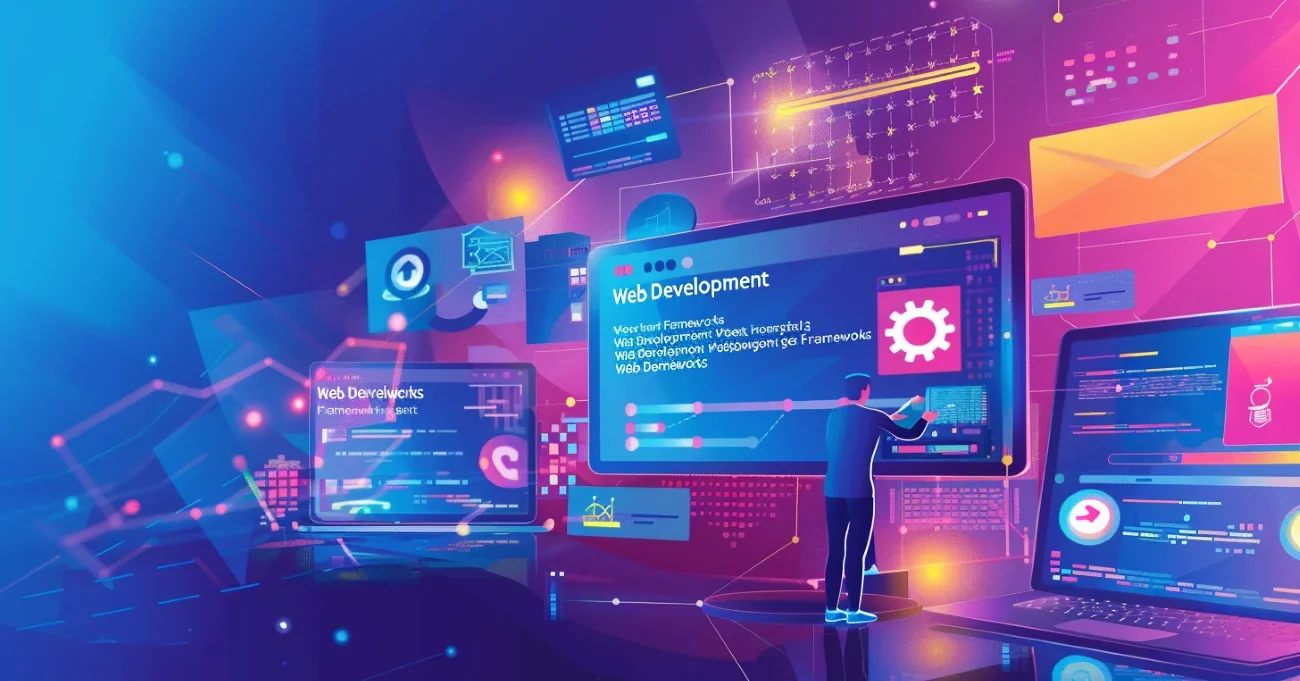Web development frameworks form the foundation of contemporary digital experiences, enabling developers to craft robust and scalable applications. These software frameworks optimize the development process, providing a structured approach for building dynamic web solutions that cater to the evolving user needs. Developers can expedite project timelines and ensure greater application consistency by leveraging pre-built modules and standardized coding practices.
At Aloa, a software outsourcing expert, we dive deep into the world of web development frameworks to identify the leading tools fueling innovation in 2024. With our extensive experience and expertise in using various software tools, potential clients can develop inclusive and user-centered web experiences. Drawing from our expert know-how, we provide invaluable insights into optimizing the accessibility and usability of your web development projects.
This blog will explore the complexities of web development frameworks. We will find out the strengths of each platform and highlight the businesses that rely on them, providing valuable insights to help you make informed decisions. We’ll also share strategies for selecting the perfect frameworks that fit your project requirements and development goals.
Let’s get started!
Best Overall Web Development Frameworks to Use in 2024
Web development frameworks are the backbone for creating solid and effective websites and web applications. Choosing the best web development framework is crucial as it provides developers with the tools and features to create impressive and scalable digital solutions. Let's explore some of the top web development frameworks of 2024.
1. Express - Builds Web and Mobile Apps in a Simple and Adaptable Space

Express stands out as a rapid and flexible web framework designed for Node.js. Its reputation is built on being straightforward and adaptable, offering a robust feature set for crafting web and mobile applications with a focus on speed. With Express, you get a toolkit filled with HTTP utility methods and middleware, allowing you to quickly whip up APIs and web applications.
What sets Express apart is its universal appeal. Businesses across the board swear by Express, making it the backbone for numerous frameworks. Startups and established enterprises lean on its versatility and user-friendly approach when aiming to develop web applications and APIs that are functional, scalable, and reliable.
2. Ruby on Rails - Delivers Tools and Resources for Scalable Web Applications
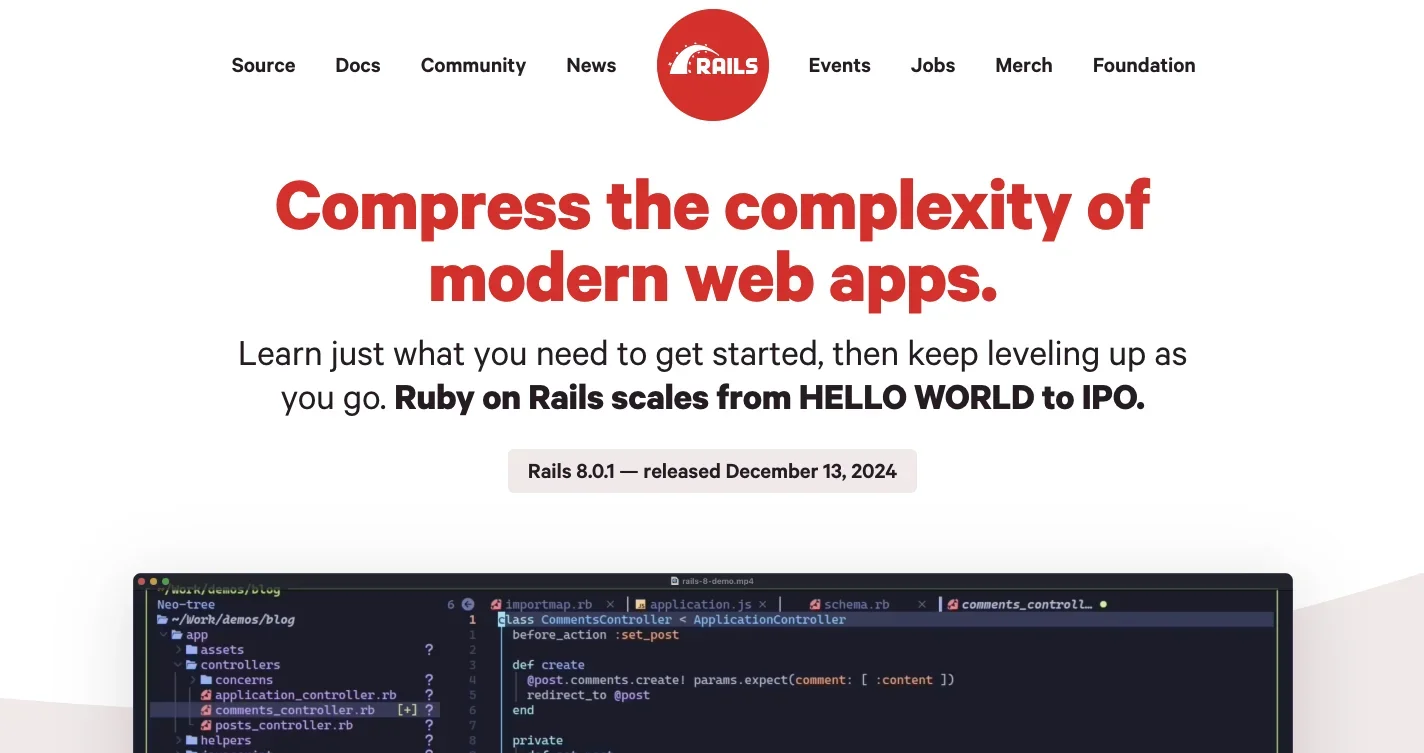
Ruby on Rails is an ideal go-to powerhouse for web development. With its robust features and elegant design pattern, Rails excels in compressing the complexity of modern web apps into manageable bits. From rendering HTML templates to maintaining live pages via WebSockets, Rails has you covered every step.
Plus, picking Rails isn't just about a framework; it's about tapping into a range of services and perks that make your development smoother. Active Records simplify how you model data, action controllers handle web requests efficiently, while action views seamlessly integrate Rails with HTML, improving your template functionality.
Rails has an impressive track record, partnering with some of the biggest names in the business. From Basecamp to GitHub and from Airbnb to Shopify, Rails has powered countless success stories over the past two decades.
3. React - Breaks Down Interfaces into Reusable Components
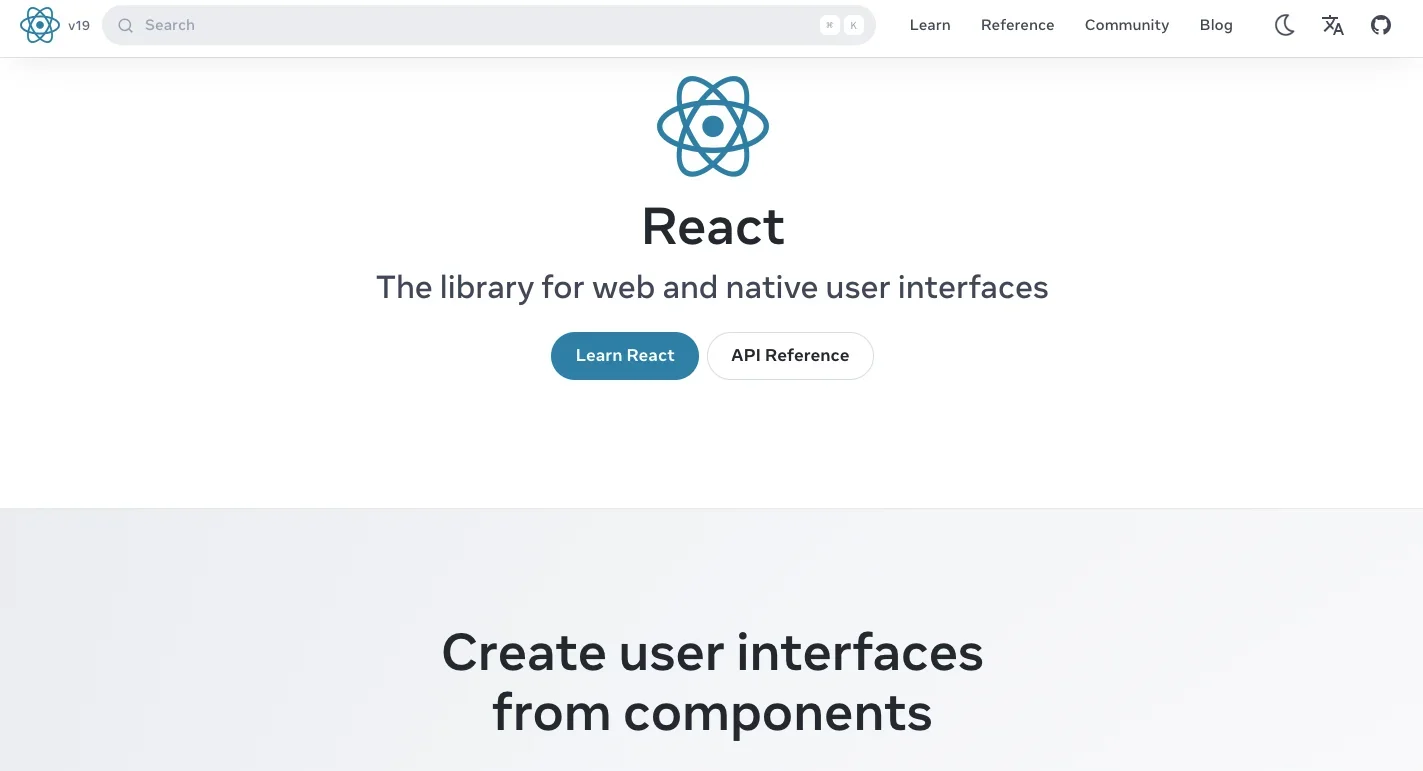
React is a powerhouse for web and native user interface development. It creates seamless, dynamic interfaces by allowing developers to build components like Thumbnail, LikeButton, and Video. Developed and maintained by Facebook, React utilizes a virtual DOM (Document Object Model) for efficient rendering and updates, resulting in improved performance and user experience.
In addition, React simplifies web development and adds a touch of interactivity wherever needed. Components receive and adapt to data, making user interfaces responsive and engaging. React Native and Expo extend their versatility beyond the web, enabling developers to create native apps for Android and iOS. This ensures a consistent and native feel across platforms.
Not only does React simplify web development, but it also adds a touch of interactivity wherever needed. Its flexibility allows developers to integrate React into existing HTML pages, making it accessible to companies with varied tech stacks. Moreover, React's recommendation of full-stack frameworks like Next.js or Remix provides a comprehensive solution for businesses looking to build entire applications seamlessly.
4. Django - Enables Secure Deployment of Web Apps with Python
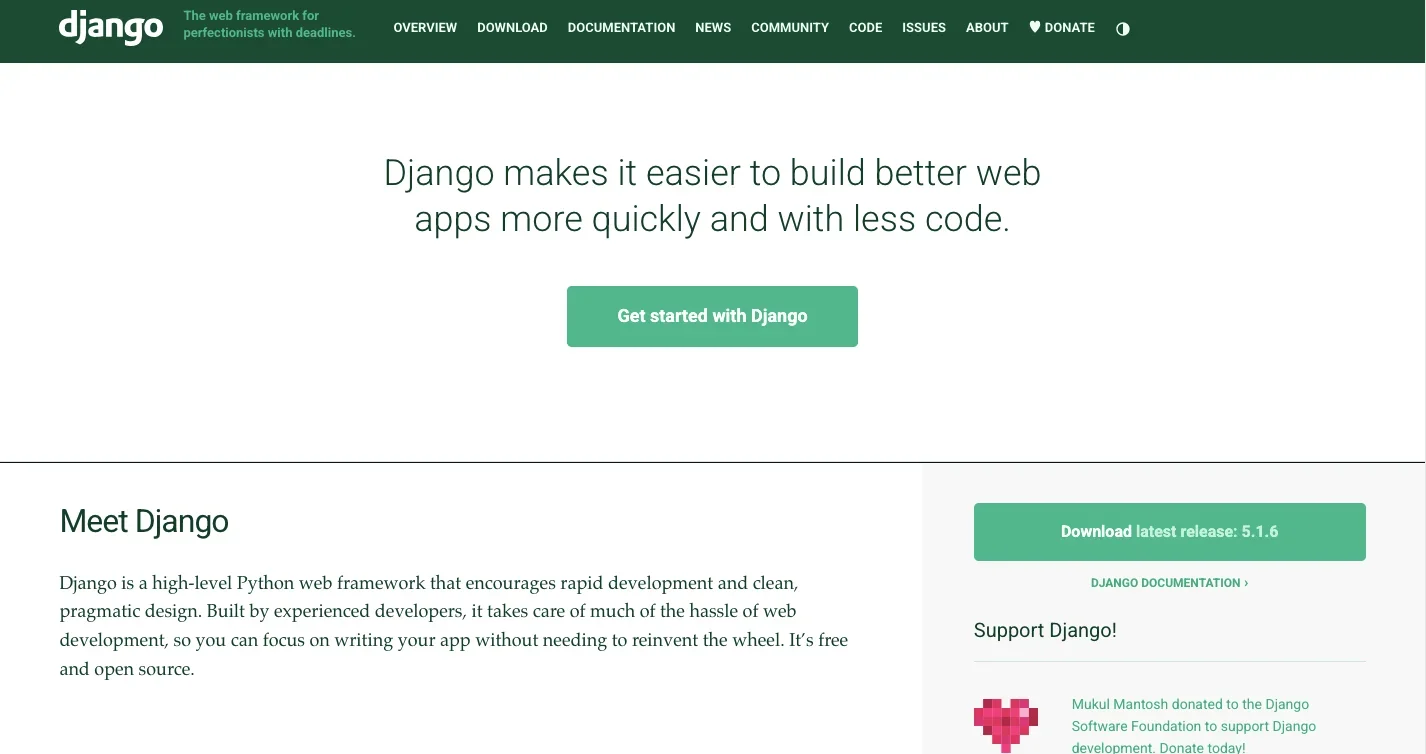
Django is a high-level Python web framework renowned for its rapid development and pragmatic design expertise. Developed by seasoned professionals, it streamlines web development processes, allowing developers to focus on app creation without starting from scratch.
Furthermore, Django offers a plethora of services and benefits to its clients. It boasts exceptional speed, robust security measures, and impressive scalability, making it a preferred choice for building diverse web applications. With Django, clients can expedite project timelines, minimize security risks, and accommodate growing user bases seamlessly.
Django caters to clients across various sectors, like e-commerce, social media, and education. Businesses that use Django reap the benefits of its versatility, stability, and strong community support, allowing them to innovate and thrive in the digital landscape.
5. Laravel - Simplifies the Process of Building Full-Stack Web Applications in PHP

Laravel is a leading web application framework known for its elegant syntax and robust features. It simplifies common tasks in web development, allowing developers to focus on creating excellent applications without getting bogged down by tedious details.
Additionally, Laravel offers its clients a wide range of services and benefits. From elegant authentication and authorization mechanisms to seamless database management and efficient file storage solutions, Laravel covers all bases. Its extensive ecosystem includes tools like Laravel Forge for server management and Laravel Vapor for serverless deployment, ensuring that clients have everything they need for successful web development projects.
From startups looking to build their first web application to established enterprises seeking to scale their online presence, Laravel caters to a diverse clientele. Its user-friendly interface, comprehensive documentation, and strong community support make it a top choice for businesses of all sizes.
6. Angular JS - Gives Developers a Solid Framework for Creating Feature-Packed Web Apps
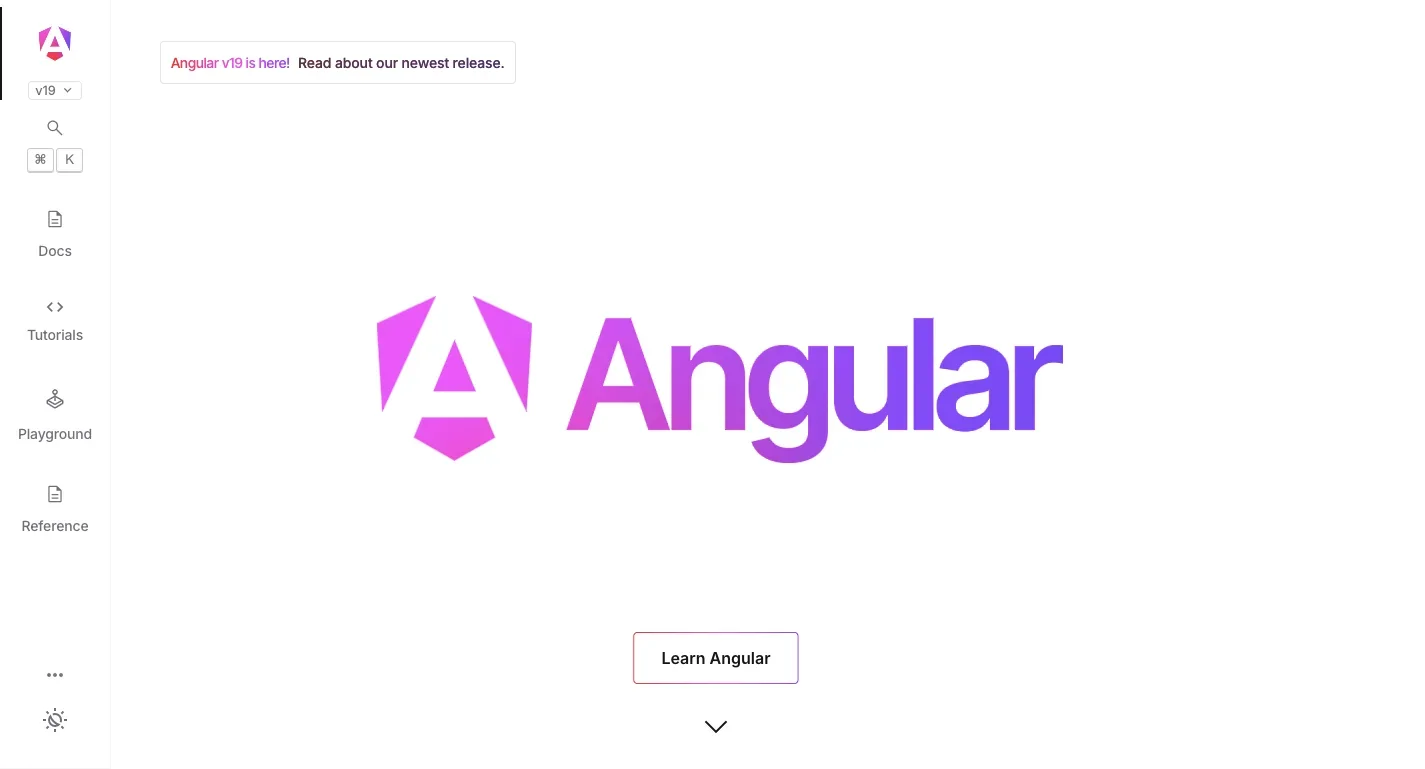
Angular offers a robust web framework to help you build scalable and dynamic web applications. From small projects to large-scale endeavors, Angular provides the tools and support you need to bring your ideas to life confidently.
With Angular, you're equipped with a powerhouse of features. They offer internationalization tools, top-level security features, and a strong focus on accessibility, ensuring that your applications can reach and serve users worldwide.
Furthermore, Angular isn't just for solo developers or small startups. It's trusted by businesses of all sizes, from startups to enterprise-level companies. Whether you're building a simple app or a complex system, Angular's versatility and reliability make it the go-to choice for businesses looking to innovate and thrive in the digital world.
7. Spring - Provides Developers with Tools to Build Scalable Web Apps using Java
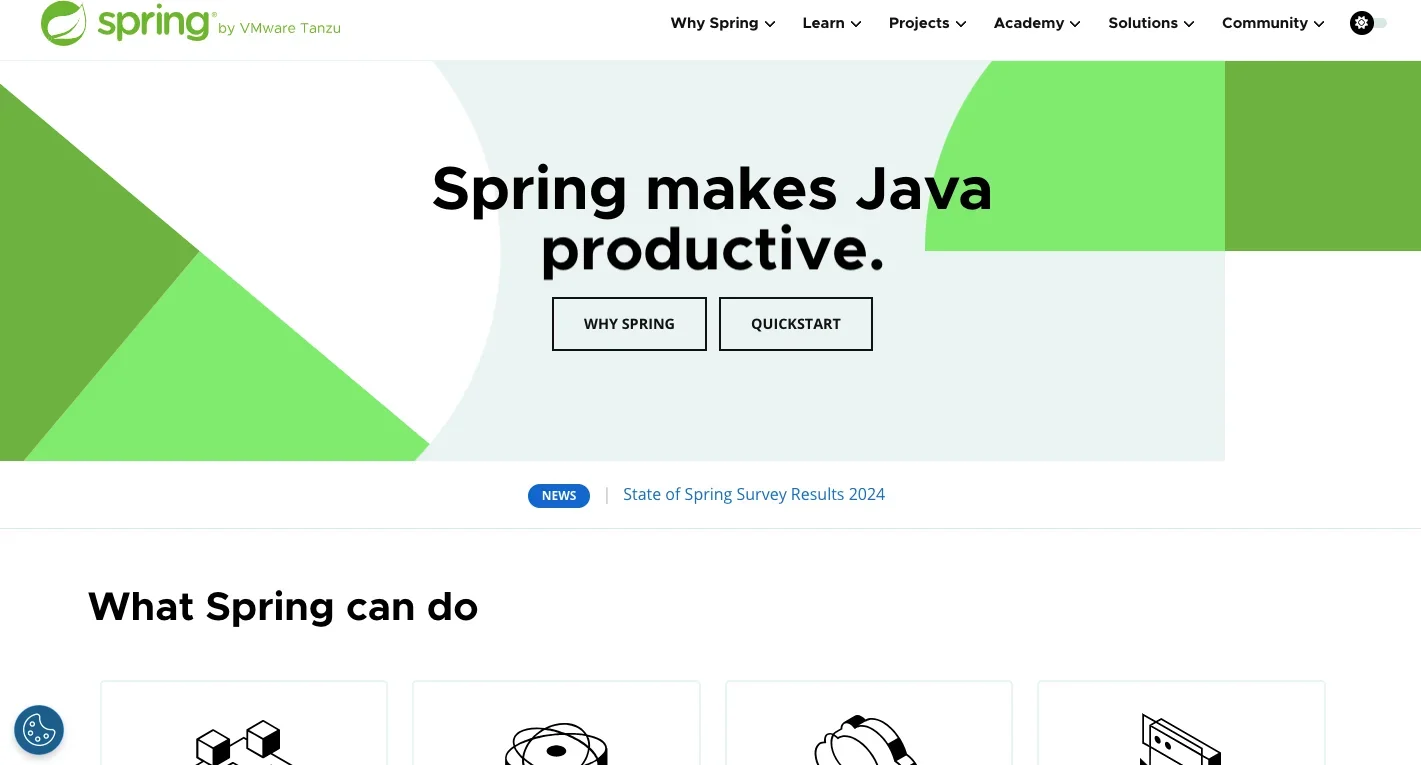
Spring is a powerhouse when it comes to web development frameworks. Its expertise simplifies Java development while offering modern, productive, and cloud-ready solutions. With a focus on microservices, reactive programming, cloud integration, and serverless computing, Spring empowers developers to build scalable web applications quickly and enhance code reuse.
For clients, Spring offers a range of services and benefits. It maximizes technology investments by swiftly delivering production-grade features with independently evolvable microservices and leveraging reactive, asynchronous architectural patterns for optimal resource utilization. With its inversion of control (IoC) feature, Spring simplifies Java development to streamline application configuration and dependency management.
Spring has earned the trust of renowned businesses like Netflix, which rely on its well-maintained framework for long-term stability and innovation. Additionally, Spring's flexibility and compatibility make it a preferred choice for a wide range of enterprises, ensuring that businesses of all sizes can leverage its capabilities for their web development needs.
8. Vue - Builds Dynamic Web Interfaces with its Progressive JavaScript Framework
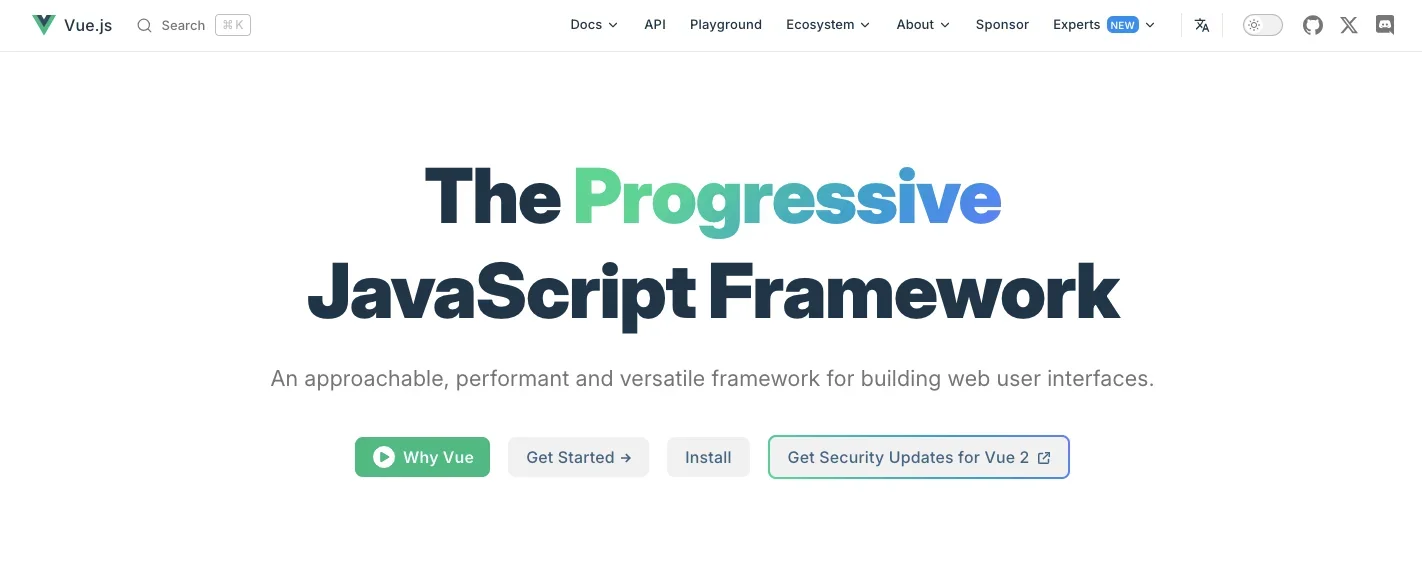
Vue is a progressive JavaScript framework renowned for its approachable nature, performance, and versatility. It harnesses the power of standard web technologies like HTML, CSS, and JavaScript, making it a top choice for any web developer seeking an intuitive solution for building user interfaces.
In addition, Vue boasts a truly reactive, compiler-optimized rendering system, minimizing the need for manual optimization and enabling developers to focus on crafting exceptional user experiences. It focuses on the view layer of web applications, providing developers with a scalable and efficient framework for building user interfaces. With world-class documentation and a vibrant community, Vue offers comprehensive support and resources to developers at every stage of their journey.
Moreover, Vue collaborates with leading businesses and sponsors, including platinum and gold sponsors, who recognize the framework's potential to drive innovation and efficiency in web development. From startups to enterprises, businesses across various industries leverage Vue to deliver cutting-edge digital experiences and stay ahead in today's competitive market landscape.
How To Choose The Best Web Development Framework for Your Project
Selecting the perfect web development framework for your project demands some serious thinking. It's essential to consider various factors to make the best decision. Here’s our handy guide on picking the best web development framework for your project:
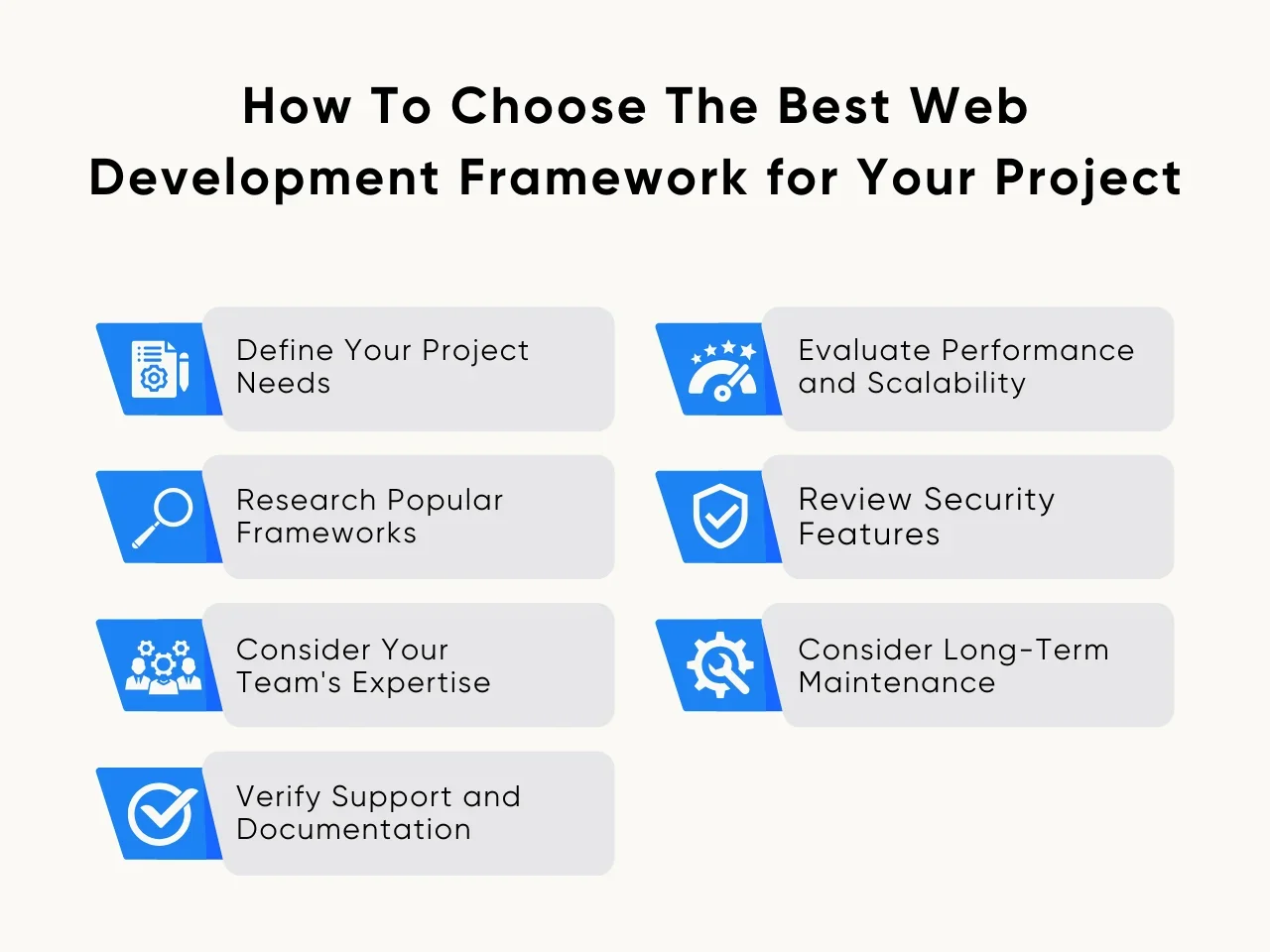
Step 1: Define Your Project Needs
Before you start looking at frameworks, you need a clear understanding of your project's requirements. This step sets the foundation for making informed decisions and ensures that the chosen framework aligns perfectly with your project's goals and objectives.
When you outline your project's essential features, functionalities, and goals, you're laying the groundwork for selecting the perfect framework to bring your vision to life. This step sets the foundation for choosing a framework to meet your project's unique needs.
Here are some critical considerations in defining your project needs:
- Purpose and Goals: Clarify the primary reason behind your project. Understanding this helps you stay focused and align every aspect of your development efforts.
- Target Audience: Define the people who will use your project. Delve into their demographics, behaviors, and pain points.
- Features and Functionalities: Identify the specific features and functionalities your project must have to fulfill its purpose. Distinguish between essential features and those that enhance the user experience but are not critical.
- Scalability: Anticipate potential growth and expansion of your project. Consider whether it can accommodate an increasing user base, additional features, or changing market demands in the future.
- Security Requirements: Prioritize your project's security and user data protection. Determine any security standards or regulations you must adhere to and integrate robust security measures accordingly.
- Performance Expectations: Set performance benchmarks for your project. Define acceptable page load times, server response rates, and responsiveness to ensure a smooth user experience.
- Integration Needs: Assess the need to integrate your project with other systems, platforms, or services. Plan for seamless data exchange and compatibility with existing technologies.
- Budget and Timeline: Consider the resources available for your project, including budget and timeline constraints. Realistic expectations regarding development time and financial investment are crucial for effective planning and execution.
Step 2: Research Popular Frameworks
Once you have a clear picture of your project requirements, it's time to explore the landscape of web development frameworks. You can look at popular choices like React, Angular, Vue.js, Django, Ruby on Rails, Laravel, and more. Afterward, see how each framework stacks up against your project's requirements and whether it's proven its worth in similar projects.
Remember, your framework choice shapes your project's long-term trajectory. So, take the time to weigh the pros and cons of each option carefully. It’s crucial to consider what works best for your current needs and what will support your project's growth and evolution over time.
Step 3: Consider Your Team's Expertise
Your development team is a valuable asset, so it's essential to consider their skills and expertise when choosing a framework. Doing so allows you to streamline development, reduce learning curves, and improve productivity. That said, evaluate the programming languages, tools, and frameworks your team is comfortable working with.
However, don't hesitate to explore new frameworks if they significantly benefit your project’s success. Ultimately, striking the right balance between leveraging your team's expertise and embracing new possibilities is vital. In doing so, you empower your team to deliver exceptional results while keeping your project on the cutting edge of web development.
Step 4: Check Community Support and Documentation
A vibrant community and comprehensive documentation can be invaluable resources during development. This enables developers to learn from forums and support channels where they can ask questions, share insights, and troubleshoot issues. Additionally, thorough documentation is essential for understanding framework features, application programming interfaces (APIs), best practices, and troubleshooting tips.
When evaluating frameworks, prioritize those with meticulously maintained documentation and a robust community presence. These factors ensure you have the support and resources to navigate the development process smoothly. With a strong support system, you can confidently tackle challenges, unleash your creativity, and quickly bring your project to fruition.
Step 5: Evaluate Performance and Scalability
Performance and scalability are critical considerations, especially for modern web applications that handle high traffic volumes or scale over time. This step ensures your application can handle increasing demands without compromising user experience or system stability. Here are some vital factors to consider when evaluating performance and scalability in choosing the best web frameworks:
- Response Time: How quickly does the application respond to user requests? Lower response times lead to better user experience.
- Resource Utilization: Monitor the utilization of CPU, memory, disk I/O, and network bandwidth to ensure optimal resource allocation and prevent bottlenecks.
- Scalability: Assess how well the application can accommodate increased load or user base. This includes horizontal scalability (adding more servers) and vertical scalability (upgrading server resources).
- Concurrency: Evaluate the application's ability to handle multiple concurrent users or requests without degrading performance.
- Fault Tolerance: Test the application's resilience to failures and ability to recover gracefully without significantly impacting performance.
- Load Testing: Conduct load tests to simulate real-world usage scenarios and identify performance limitations under heavy loads.
- Caching Mechanisms: Implement caching strategies to reduce database load and improve response times for frequently accessed data.
Step 6: Review Security Features
Security should always be a top priority in web development. Various frameworks are available that are equipped with robust built-in security mechanisms. These include essential safeguards like input validation, authentication, authorization, encryption and shields against notorious foes like cross-site scripting (XSS) and structured query language (SQL) injection attacks.
You may also scrutinize the framework's track record for security updates and responsiveness to emerging threats. A framework that stays ahead of the curve promptly addressing vulnerabilities and bolstering defenses, keeps your sensitive information against cyber threats or data breaches.
Step 7: Consider Long-Term Maintenance
When considering your project's future, it's essential to consider its long-term maintenance needs. You'll want to choose a reliable framework with regular updates and support options available when you need them. If you do, look for a framework with a vibrant community and plenty of plugins and tools to help you along the way.
On top of that, make sure it's compatible with older versions and has a track record of stability and ongoing development. Consider factors like community size and industry adoption rates, too. It's all about picking a framework that works best for your project and can help it grow and evolve smoothly.
Key Takeaway
Selecting the best web development frameworks is pivotal in creating robust and efficient web applications. Today, the choice of framework can significantly impact the development process and the project's ultimate success. The right framework lays the foundation for innovation and user satisfaction, driving long-term success in the digital landscape.
Understanding how to choose the most suitable web development frameworks empowers developers to craft high-performing and scalable web applications. Developers should carefully evaluate considerations such as ease of use, scalability, community support, documentation quality, and performance optimizations. Doing so allows them to pinpoint frameworks that align with their project needs and exceed user expectations.
Seize the chance to contact us at [email protected] or explore our other insightful blogs to stay informed about the latest developments in the web development space. We're here to fully support you in turning your web development ideas into reality. Let's join forces to ignite innovation and achieve success in web development throughout 2024!

